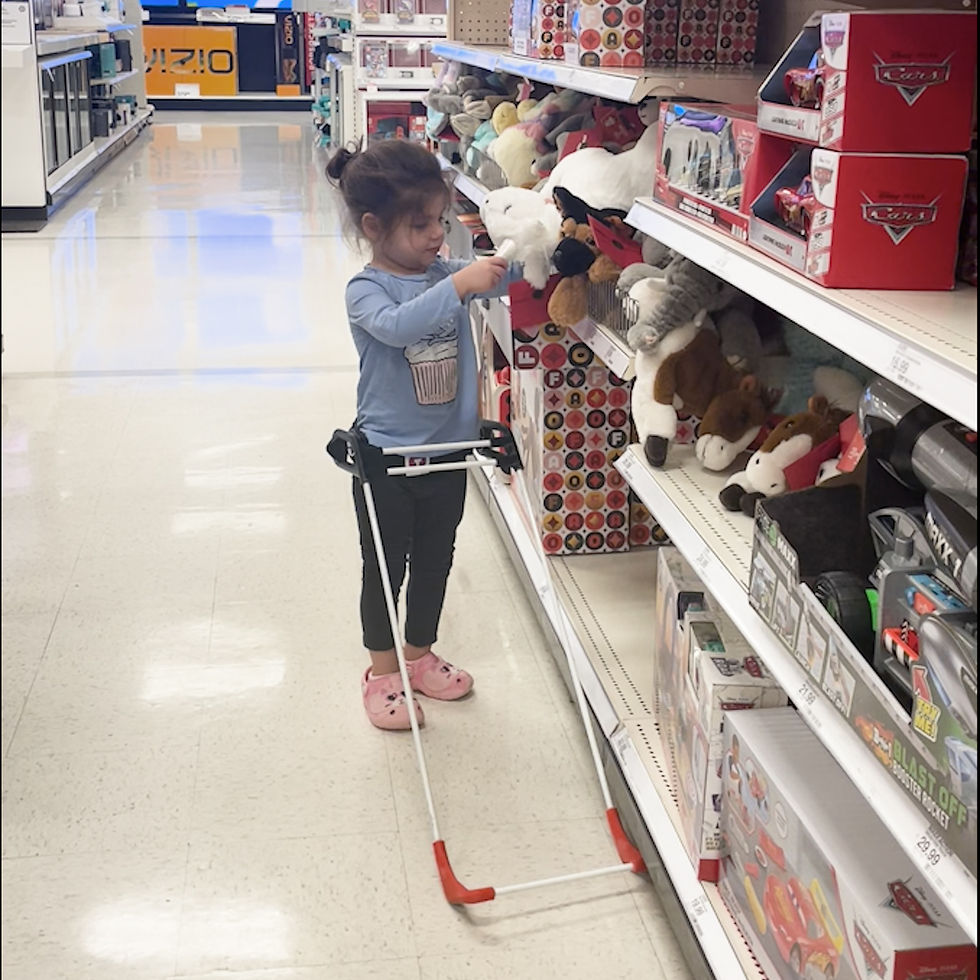The Long Cane Needs a Revolution — And It’s Here
- Grace Ambrose-Zaken

- Oct 20
- 2 min read
For more than 150 years, the long cane has remained the cornerstone of travel for people with a mobility visual impairment or blindness. In 1872, William Hanks Levy and Elizabeth Gilbert — two brilliant blind advocates — first documented and promoted the long cane technique in Blindness and the Blind: Or, A Treatise on the Science of Typhology. Their work revolutionized mobility training, yet the basic method they described remains unchanged: move the cane in an arc from side to side to detect obstacles before taking a step.

But it’s now 2025. And swinging a cane rhythmically across every type of terrain—sidewalks, gravel paths, grass, indoor flooring—is still physically demanding and, for some, simply not possible. Children learning to walk, people with limited upper-body mobility, and wheelchair users cannot consistently swing a long cane.
Children, individuals with limited upper-body mobility, and people using wheelchairs are all left behind by a system that assumes two working arms and perfect rhythm.
Manufacturers of long canes have developed a wide range of cane tips to address the challenges of different surfaces and user preferences. Whether it’s the Pathfinder tip for fast walkers, the Roller Marshmallow for quiet indoor use, or the Dakota Disc for outdoor terrain, each design aims to improve feedback and glide. These tips enhance performance — but they do not change the fundamental challenge: the long cane must still be swung back and forth.
Changing the tip doesn’t change the task.
Changing the tip doesn’t change the task.

The Innovation Is Here
Every cane tip on the market today is still bound by the same fundamental technique that originated in the 19th century. What’s missing is an innovation that makes the protective arc—the safe zone two steps ahead—accessible to all travelers, not just those who can swing a cane perfectly.
That’s where Safe Toddles’ Belt Cane changes everything. The Belt Cane brings the long cane arc into a wearable, rectangular design that maintains constant contact with the ground. The shape of the Belt Cane frame is the physical embodiment of swinging a long cane side to side—capturing the same protective arc automatically.
Hands-Free Mobility: The Future of Orientation and Safety
With the Belt Cane, blind toddlers experience safe mobility as early as their first steps. They can explore freely and confidently, gaining natural walking skills and spatial understanding without needing to master the arm motion of a traditional cane.
For preschool children and those with motor impairments who can’t swing a cane, the Belt Cane provides access to independent travel that was previously out of reach. It’s not about replacing the long cane—it’s about making its core benefit accessible to everyone.
Conclusion: The Revolution Is Wearable
The long cane will always remain a cornerstone of blindness mobility, but after 150 years, it’s time to build on its legacy. The belt cane revolution has begun by making the long cane’s tactile feedback effortless, automatic, and universally accessible.
With constant feedback lighting their way, those who cannot see can feel the path, walk with confidence, and lead the rest of us forward.
For more information about belt canes - go to safetoddles.org








Comments